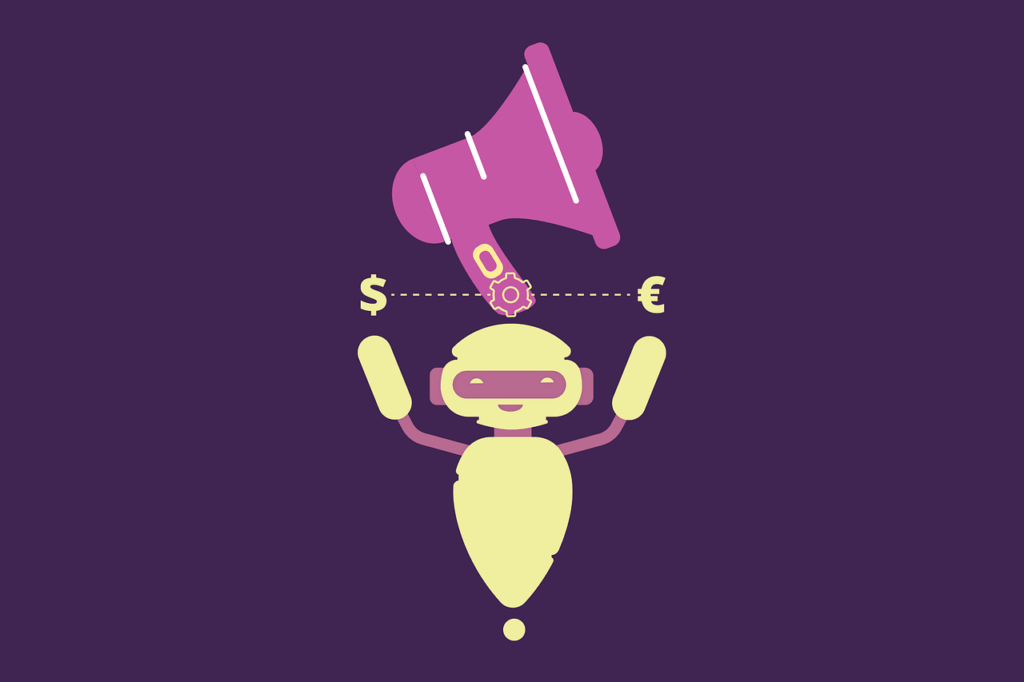Understanding Competitive Advantage
In the business game, standing out is the name of the game. It’s not just about crunching numbers; it’s about offering something that makes customers stick around. Let’s break down what makes a company a head-turner and how it can stay ahead of the pack.
Types of Competitive Advantages
Some businesses have that extra something that makes them shine. Let’s look at what these elements are:
| Type of Advantage | Description |
|---|---|
| Cost Structure | Keep things affordable by slashing costs. Customers love a good bargain! |
| Branding | Make a name that sticks. Think of a brand that instantly pops into your head. That’s the power of branding! |
| Product Quality | Offer products so good, they exceed what folks expect. Blow their socks off. |
| Distribution Network | Get those products out there and fast. The easier they are to find, the better. |
| Intellectual Property | Guard your unique creations like a hawk. It’s your secret sauce. |
| Customer Service | Serve with a smile. Make customers feel valued and they’ll keep coming back. |
These are the magic ingredients for making a company a top contender. Dive deeper into this in our piece on types of competitive advantage.
Building Lasting Competitive Advantages
So, how do you keep that edge for the long haul? It boils down to being a tough act to follow. Here’s how to build a moat around your success:
- Brand Strength: A killer brand creates a loyal fan base.
- Barriers to New Entrants: Stake your claim so new faces find it tough to join the club.
- Intellectual Property Defense: Use trademarks and patents like a fortress to keep imitators at bay.
Warren Buffet knows all about this, calling them “economic moats” that keep competitors at arm’s length (Investopedia).
To build this fortress:
- Identify your secret sauce—what makes you unique?
- Make some noise about it. Let your marketing and operations spotlight these strengths.
- Use strategies that highlight these perks, ensuring customers not only come but stay loyal.
Want more tips on keeping your edge sharp? Check out our guide on competitive advantage strategies.
Understanding what makes you special and playing it up can help businesses not just survive but thrive. Stay ahead by checking out insights on competitive advantage in business.
Strategies for Competitive Advantage
Businesses aiming to boost their market position often lean on a mix of clever tactics to get ahead. The game plan generally revolves around cutting costs, building strong brands, crafting top-notch products, and leaning on unique innovations coupled with killer customer service.
Cost Structure Advantage
Winning in the marketplace often means outsmarting your rivals on price. Companies that keep an eagle eye on their expenses can dish out their goods for less cash than their counterparts. This involves sprucing up the supply chain, trimming the fat on expenses, and putting those bulk savings to work.
The cost-cutting champ can woo price-focused buyers while still raking in the dough. But snagging this edge means never sitting still—always tweaking expenses for the never-ending curveballs the market throws. Dive into more insights with our article on competitive advantage cost leadership.
| Cost Structure Factors | Impact on Advantage |
|---|---|
| Sneaky Cost-Saving Tricks | Lets you price aggressively |
| Bulk Buying Benefits | Lowers the cost of each gizmo |
| Supply Chain Shuffling | Speeds up delivery, trims costs |
Branding and Product Quality
Brands aren’t just logos—they’re trust builders. A snazzy logo paired with quality goods can be your ticket to retaining customers. Folks often shell out more for names they know and love, which means more cash in your pocket.
Authentic and kick-ass products, along with savvy branding, put a halo around your company, pulling in fans who stick around. Clear messaging about what makes you awesome connects emotionally, making them less likely to jump ship for the other guy. Find more juicy tips in our pieces on competitive advantage in marketing and sustainable competitive advantage examples.
| Branding Elements | Competitive Advantage |
|---|---|
| Brand Fame | Fosters trust and repeat business |
| Assured Quality | Cuts down on returns, builds faith |
| Iconic Selling Point | Stands apart from the rest |
Intellectual Property and Customer Service
IP can be your secret weapon, keeping copycats at bay with exclusive access to your slick inventions, snappy trademarks, or killer patented gizmos. This cloak of protection can fend off rivals, helping you keep that edge sharp.
Oh, and let’s not forget customer service—the real unsung hero. Treating customers like royalty makes them come back and spread the good word. Top-notch service paired with solid IP can seriously boost your standing. For more, peek at our article on competitive advantage customer service.
| Intellectual Property Types | Benefits |
|---|---|
| Patents | Shields new ideas from copycats |
| Trademarks | Boosts brand clout |
| Copyrights | Locks down creative stuff |
| Customer Service Metrics | Impact on Competitive Advantage |
|---|---|
| Happiness Score | Keeps customers around & chatty about you |
| Quick Response | Pumps up loyalty and good vibes |
By mixing up these strategies—fine-tuned pricing, standout branding, product excellence, guarded innovations, and stellar customer care—companies can build a solid road map to rising above the competition.
The Value Chain Analysis
Michael Porter’s Concept
Michael E. Porter dropped the value chain concept like it’s hot in his book “Competitive Advantage: Creating and Sustaining Superior Performance.” Basically, he pointed out that what a company does—designing, making stuff, marketing, delivering, and supporting—makes all the difference in the world. Each little thing it does can either boost its game against the competition or sink it (Investopedia).
The value chain features some big deal activities: bringing in the goods (inbound logistics), making the goods (operations), getting the goods out there (outbound logistics), shouting about them (marketing and sales), and covering folks after they’ve bought (service). Then there’s the behind-the-scenes stuff: figuring out how to run the whole darn place (firm infrastructure), handling people (human resources), getting all smart with gadgets (technology development), and making sure we’re stocked up but not overspending (procurement). Knowing all this helps firms do things better and come up with those sneaky competitive moves that leave others in the dust.
| Value Chain Activities | Description |
|---|---|
| Inbound Logistics | Grabbing, stashing, and sorting the stuff you’ll need to start |
| Operations | Turning raw stuff into shiny finished stuff |
| Outbound Logistics | All the steps to put the shiny stuff into customers’ hands |
| Marketing and Sales | Hype strategies to keep folks buying your stuff |
| Service | Keeping customers happy long after the sale |
Creating Value with the Least Cost
Value chain analysis is like a personal trainer for businesses; it gets them to trim the fat and boost the gains. By breaking down each link in the chain, it’s easier for businesses to find spots where they can save dough and still make their goods and services awesome (Investopedia).
Cutting costs? Yeah, that might mean snagging better deals on materials, fine-tuning production lines, or sprucing up technology gear. Checking and rechecking what comes in, what’s done with it, and what goes out flags up the bits that are dragging you down so you can up your game. When customers notice you’ve got their back with primo choices, they’re sticking around.
Optimizing Procedures for Efficiency
Want to be a big fish? You’ll need to trim the sails on those workflows to sail past the competition. Value chain analysis acts like a map to stay on course and keep things smooth sailing (Propel Software). Slicing through inefficiencies leads to quicker services, happier customers, and less cash spent.
Consider tech and tweaks that jazz up how you do things. Automating the grind means less elbow grease needed, and nifty software can sort out all that pesky project planning. Staying nimble lets businesses zig when the market zags, keeping them ahead in the race.
If you’re hungry for more about grabbing competitive advantage by the collar, dive into our reads on competitive advantage strategies and competitive advantage in marketing.
Applying the Value Chain Analysis
Getting the hang of value chain analysis can be a game-changer for businesses looking to get ahead. It shines a light on what activities boost value and spots ones that might just be burning cash instead.
Value Chain Activities
Michael Porter’s value chain breaks down into five main activities: inbound logistics, operations, outbound logistics, marketing and sales, and service. Each of these steps plays a key role in creating bang-for-buck value that outstrips spending, helping to rack up those profits.
| Primary Activity | Description |
|---|---|
| Inbound Logistics | Bringing in, storing, and keeping track of inventory |
| Operations | Turning resources into ready-to-go products or services |
| Outbound Logistics | Getting products into customers’ hands |
| Marketing and Sales | Wooing customers and pushing products or services |
| Service | After-sale aid and customer support |
Getting these primary activities running smoothly can buff up a business’s efficiency and give it a leg up on the competition. For more insights into what makes a business thrive, take a peek at the competitive advantage definition and dive into the types of competitive advantage.
Secondary Activities
Backing up these primary tasks are secondary activities like procurement, human resources, infrastructure, and tech development. These help crank up the effectiveness of the main activities.
| Secondary Activity | Description |
|---|---|
| Procurement | Snagging resources and materials |
| Human Resource Management | Bringing in, training, and boosting staff |
| Infrastructure | How the business is set up and run |
| Technological Development | Research and bettering of technologies |
Smart management of these behind-the-scenes activities can ramp up performance in the primary ones, helping a business compete better. Understanding how these pieces connect can aid in strategizing, so check out competitive advantage strategies.
Role of Support Activities
Support activities exist to up the ante on the efficiency of the primary ones. Better support can ripple across the value chain, letting businesses fine-tune their entire system.
- Improved HR practices can perk up operations.
- Smart procurement keeps inbound logistics lean.
- Solid infrastructure lets the whole business run smoother.
By pulling everything together—primary and secondary—through efficient support activities, companies can cement a long-lasting edge in the market. This pays off not only in saving money but also in winning customer smiles and loyalty, which means staying successful down the road.
For ideas on crafting a smart competitive strategy, jump into achieving competitive advantage and think about how these ideas might fit into your industry.
Value Chain Optimization
Making the most of your value chain can boost a company’s edge over the competition. Spot where you’re dragging your feet, boost those profit spots, and sprinkle in some Industry 4.0 tech—boom, you’re delivering top-notch value to your customers.
Spotting Problem Areas
First off, you’ve got to dissect all the pieces that come into play when delivering a product or service. Take a hard look at every link in that chain. It’s like finding that squeaky wheel that’s eating up cash but giving back little value (Propel Software).
| Activity | Cost | Value Contribution | Status |
|---|---|---|---|
| Manufacturing | High | High | Needs a Tune-Up |
| Customer Service | Medium | Low | Needs Tweaking |
| Marketing | Low | High | Keep It Up |
Zeroing in on these trouble spots helps decide what to fix first, so everything runs smoother.
Pumping Up Profit Margins
Prioritize those parts of the value chain that fatten profit margins. This usually means customer-facing gigs—custom projects, handling complaints, keeping up with regulations. Nail these, and you’re looking at happier customers and fatter wallets (Propel Software).
Keeping an eye on the right metrics—like those below—lets you see what’s working and what’s not:
| KPI | Description |
|---|---|
| Gross Margin | Revenue minus the cost of making stuff |
| Operating Margin | What you’re earning before interest and taxes out of your total revenue |
| Profit Margin | The net gain you make from your revenue |
Consistent check-ins with these figures help pinpoint which steps are profit heroes so you can keep turning up the dial while juggling resources smartly.
Throwing Money at Industry 4.0 Tech
If you’re serious about staying on top, it’s time to consider throwing some cash at tech. After a value chain health check, new tech can revamp rusty processes and boost efficiency (Propel Software). Check out these tech superstars:
- Artificial Intelligence: It’s like having a crystal ball for predictions and decisions.
- Internet of Things (IoT): Keeps tabs on your stuff and smooths out kinks in logistics.
- Automation: Makes production a breeze and cuts down on oops moments.
Investing in the tech isn’t just about efficiency; it’s about staying nimble and ready for market shifts, giving your company that sturdy, long-term edge. Stay savvy and keep your value chain running like a well-oiled machine.
For more smart moves in staying competitive, take a look at our piece on competitive advantage strategies and find out how to notch up lasting success.
Strategies for Enduring Advantages
Winning in business is all about standing out in the crowd, and that’s where three smart ways to do it come in: cutting costs like a pro, making your stuff unforgettable, or zeroing in on a special crowd. These were cooked up by Michael Porter, a smart cookie who knew how to give businesses a leg up.
Cost Leadership
Cost leadership is for those who want to hawk their goods or services cheaper than a flea market sweater. Basically being the industry’s bargain-basil. If you’ve ever shopped at Walmart without your wallet wincing, you’ll know the drill. It’s all about running an enterprise that’s as slick and smooth as a slip-n-slide with low operational costs.
| What It Takes to Be a Leader in Cost | What It Means |
|---|---|
| Slick Efficiency | Keeping things running like a well-oiled machine |
| Bulk Buying | Snapping up loads of stuff for better deals |
| Economies of Scale | Making more stuff to knock down costs per item |
The trick is squeezing every bit of efficiency throughout your entire operation. Just like grandma’s old saying “watch your pennies, and your dollars will watch themselves,” you’ll have to comb through your processes and see where you can save without turning your goods into junk.
Product Differentiation
Want customers sticking to your brand like glue to glamour? Then it’s time for product differentiation. This means crafting things people can’t find anywhere else, smacking them with unique features or some top-notch quality. Apple, with its fancy gizmos and wizard-like tech, shows how it’s done.
To really stand out, here’s what businesses should aim for:
| Stand-Out Factors | Meaning |
|---|---|
| Be an Innovator | Sticking new bells and whistles on your product |
| Keep Quality High | Making sure what you offer is a cut above the rest |
| Build a Name | Crafting a brand that people not only remember but love |
Differentiation is about getting into the heads of your customers, understanding their wants and needs, and whipping up offerings that stick with them. This often wins over their hearts, making them come back for more.
Focus Strategy
Focus strategy is all about delivering just what special groups of folks are hankering after. You don’t rope in the entire crowd; just the ones who’re ready to root for your brand. Warby Parker does a neat job with this, serving up classy specs at wallet-friendly prices for people who adore style but recoil at price tags.
This strategy has two flavors:
| Types of Focus Strategy | What It’s About |
|---|---|
| Cost Focus | Targeting niche markets while keeping prices down |
| Differentiation Focus | Whipping up special stuff for a specific group |
To knock it out of the park with a focus strategy, you have to do some groundwork—research, pinpoint your folk’s needs, and build products that make them say, “Shut up and take my money!” This can rev up customer love and loyalty, crucial for locking in a winning streak.
Pulling off these strategies gives your business the leg-up needed to stay relevant and true to your plans, pushing for growth and staying power. If you want to dig deeper, you might want to check out more on making your mark in marketing and brushing up on competitive advantage tricks.
Industry Examples of Competitive Advantages
Peek into the success stories of different companies and get a whiff of how they outshine the rest. CEOS, business owners, and marketing hotshots, listen up! Here’s a little walk through the land of competitive advantages featuring operational savvy, customer smarts, and product prowess.
Operational Excellence
Ever wondered why Walmart and Amazon reign supreme? It’s their knack for operational wizardry. They keep the good stuff flowing without emptying your pocket. Amazon’s delivery magic tricks are partly due to their quirky inventory system, shuffling items like a game of find-the-needle-in-a-haystack—but faster! (Source) Both companies master the art of running things cheap and cheerful.
| Company | Competitive Advantage | Key Features |
|---|---|---|
| Walmart | Cost Leadership | Pile ‘em high, sell ‘em cheap, slick supply chain |
| Amazon | Delivery Whiz | Spontaneous stock system, speedy dispatch |
Be nosey and dig deeper into penny-pinching strategies by clicking here.
Customer Intimacy
Apple and Ritz-Carlton shower their customers with love, shaping things around what folks really crave. Apple’s gadgets have mojo; they’re not just tech—they’re art, creating fans as loyal as a hound dog. The Ritz? They’ll know your favorite pillow fluff before you even ask (Source).
| Company | Competitive Advantage | Key Features |
|---|---|---|
| Apple | Emotional Bonding | Ain’t just a product; it’s a lifestyle |
| Ritz-Carlton | Tailored TLC | Starring personal touches fit for a king or queen |
Curious about making your customers swoon? Head here for more.
Product Leadership
3M and Vistakon are top of the class in creating mind-blowing stuff. Their secret sauce? Dive deep into R&D like it’s going out of style. 3M has an army of brainiacs scattered worldwide, always on the grind, crafting the next big thing (Source).
| Company | Competitive Advantage | Key Features |
|---|---|---|
| 3M | Innovation Champs | R&D heavyweights, global innovation stations |
| Vistakon | Niche Needs | Crafting lenses for all the four-eyed folks out there |
To geek out on innovation and standing out, visit here and here.
These bits and pieces of the industry paint a vivid picture of how going for the gold in different areas gives a company that magic touch. Got a business itch? Take a cue from these standouts to muscle up your market game!
Choosing a Value Discipline
Kicking off with a theme of outsmarting the competition, companies actually have some trusty tools in their arsenal. There are these things called value disciplines, and they can act like secret strategies for grabbing that market spotlight. For those running the show or crafting killer marketing plans, knowing these strategies can be the ace up their sleeve, steering their crew towards growth and triumph.
Operational Excellence
When it comes to running a tight ship, operational excellence is where the magic happens. It’s about dishing out dependable goods or services with a price tag that doesn’t break the bank. Think of champs like Walmart and Amazon. Amazon, for instance, zips through deliveries by juggling clever inventory tricks, which means your orders get to you lickety-split Pricing Solutions.
| Company | Operational Approach |
|---|---|
| Walmart | Rock-bottom prices with tons of choices |
| Amazon | Lightning-fast delivery with smart logistics |
Customer Intimacy
Now, let’s talk about customer intimacy – it’s all about knowing your peeps and giving them the red-carpet treatment. Companies riding this wave ace at personal touches, forming strong bonds with their customers. Apple, for example, rocks at design, making you feel like their gadgets are an extension of you. Ritz-Carlton takes it a notch higher, ensuring every guest feels like royalty with personalized services Pricing Solutions.
| Company | Customer Experience Tactics |
|---|---|
| Apple | Slick designs that tug at your heartstrings |
| Ritz-Carlton | Tailored service and OMG-level detail |
Product Leadership
Here’s where things take a futuristic turn – product leadership is the Jedi path of pushing the limits with non-stop innovation. 3M and Vistakon, for instance, lead the charge by constantly cooking up pioneering products. 3M pour heaps into R&D, making sure they’re always a step ahead in inventing cool stuff Pricing Solutions.
| Company | Innovation Game Plan |
|---|---|
| 3M | Big bucks in research and discovery |
| Vistakon | On the frontier of groundbreaking creations |
Getting the hang of these value disciplines can be a game-changer for business movers and shakers. Aligning their game plan with one of these ensures they can woo their audience, iron out operations, and keep the innovation gears churning. Need more hints? Check out our competitive advantage strategies guide to find what’s right for your scene.





















